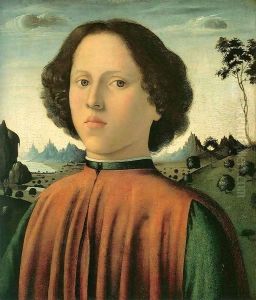Biagio di Antonio Tucci Paintings
Biagio di Antonio Tucci was an Italian painter during the Renaissance period, born in 1446 in Florence, Italy. His work is representative of the Florentine School, which was at the forefront of the early Renaissance artistic developments. Not as widely recognized as his contemporaries like Sandro Botticelli or Domenico Ghirlandaio, Biagio di Antonio nonetheless contributed to the rich tapestry of Renaissance art with his own distinct style and thematic preferences.
Biagio’s career was marked by a versatile approach to painting, as he worked on various mediums including panel paintings, cassone panels (decorative fronts of marriage chests), and frescoes. His subjects ranged from religious scenes to mythological narratives, often characterized by vivid colors and a narrative style that was slightly conservative for his time, reflecting an adherence to the traditions of the Quattrocento rather than the evolving High Renaissance ideals.
Little is known about Biagio di Antonio's training, but it is believed that he might have been influenced by artists such as Fra Filippo Lippi and Andrea del Verrocchio. One of his most notable works is 'The Story of Cupid and Psyche,' which showcases his skill in creating detailed narrative scenes. This work, among others, indicates his involvement with the popular humanist themes of the time, reflecting the contemporary fascination with classical mythology and literature.
Biagio di Antonio’s art also reveals his collaboration with other artists, which was a common practice in the workshops of Renaissance Florence. He is known to have worked with the likes of Jacopo del Sellaio and even Botticelli on occasion. Unfortunately, Biagio did not garner the same level of fame as some of his contemporaries, and as a result, many of his works were attributed to other artists until the 20th century when art historians began to reassess his contributions.
He died in 1516, leaving behind a body of work that, while not as well-known as that of the leading lights of the Renaissance, provides a valuable glimpse into the era's artistic diversity and the interplay of ideas between different artists of the time. Biagio di Antonio Tucci’s paintings can be found in various museums and collections, offering insights into the more communal and collaborative aspects of Florentine art during the Renaissance.

